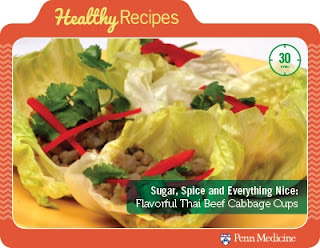The grocery store can be a tricky place to navigate. It can be especially frustrating if you are trying to strike a balance between health and affordability. If you frequently find yourself questioning whether you should choose the organic croutons or the croutons on sale, you are not alone.
Below, are definitions of this new grocery store vocabulary.
Certified Organic
Organic agriculture is grown without the use of genetically engineered seeds or crops, sewage sludge, long-lasting pesticides, herbicides or fungicides.
Certified organic goes beyond crops to include certified organic livestock as well. These animals are fed organically grown feed and have access to fresh air and the outdoors while receiving no antibiotics or added growth hormones.
The United States Department of Agriculture (USDA) requires that everyone who produces, processes or handles organic agricultural products must be certified by a USDA-accredited certifier in order to sell, label or represent their products as "organic."
To become certified they must develop, implement and maintain an organic system plan.
Certified Naturally Grown
Certified naturally grown is an alternative to the USDA's National Organic Program meant primarily for small farmers distributing through local channels such as farmers markets, roadside stands, local restaurants, community supported agriculture (CSA) programs and small local grocery stores.
The standards and growing requirements are no less strict than the USDA National Organic Program rules. The primary difference between Certified Naturally Grown and the USDA Organic program is cost to farmers and paperwork requirements.
Basic Conventional Farming
Basic conventional farming has been recognized since the 1950s. These farmers use synthetic pesticides, fertilizers, genetically engineered organisms and growth enhancers to stimulate the soil and crops.
Synthetic fertilizers add various nutrients to the soil and pesticides or fungicides help control insects. The focus is on short-term yield increases rather than long-term soil health.
When it comes to choosing conventional versus organic, check out the Environmental Working Group’s list of the
Dirty Dozen or Clean 15.
Grass-fed or Pasture-raised
Livestock that is fed a natural diet, which could include grass, bugs, and other organisms in a field are considered to be grass-fed or pasture-raised.
Typically, farmers who raise pastured livestock do not feed their livestock antibiotics or inject them with hormones.
Research shows that meat, eggs, and dairy products from grass-fed animals have higher omega-3 fatty acids, more favorable omega-3 to omega-6 ratios, and lower cholesterol than non-pastured animals.
Grass Finished
Animals considered “grass finished” are fed grass only during the period preceding processing. This is distinguished from the industry standard of feeding grain, usually corn, during the same period.
Chemical Free
Part of sustainable agriculture prohibits the use of harmful chemical pesticides.
As a practice, chemical-free farming tries to restore soil stability and fertility in target locations. Chemical-free agriculture is difficult to practice, especially where land has already been degraded.
Heirloom
Similar to your great-grandmother’s tea pot, heirloom is a variety of horticulture that is maintained by small groups of private individuals to preserve genetic diversity and/or certain characteristics, over thousands of years.
Genetically Modified Organisms (GM or GMOs)
The term GM foods or GMOs (genetically modified organisms) is most commonly used to refer to crops created for human or animal consumption using the latest molecular biology techniques.
Gluten-free
The term gluten free means a product does not contain gluten, a combination of protein fragments found in wheat, rye, barley and sometimes oats. A gluten-free diet is currently the only known treatment for Celiacs’ disease, a chronic digestive disorder. Individuals with
Celiac’s disease experience a toxic immune response when they ingest gluten.
Wheat-free
Some people are allergic to the wheat protein itself, including wheat albumin and wheat globulins. People allergic to wheat need to avoid wheat and its by-products.
Learning how to read and understand grocery store lingo is important for eating healthy. Knowing what you’re eating, and where it came from can make food and cooking more enjoyable.
Get More Information About Weight-loss Surgery at Penn
Learn if bariatric surgery is right for you by attending a
free information session about the Penn Metabolic and Bariatric Surgery Program.
Learn more about
weight-loss surgery at Penn at this free session and meet physicians and team members from the Penn Metabolic and Bariatric Surgery Program
Register for this free
weight-loss event here.














